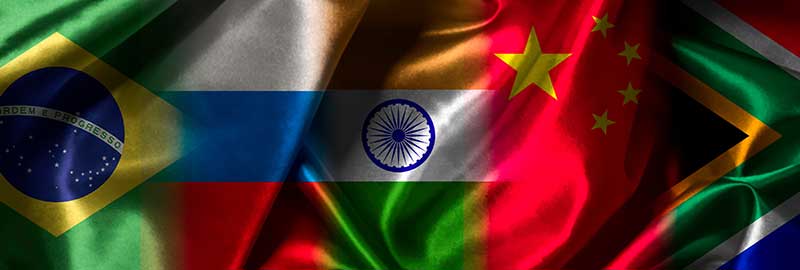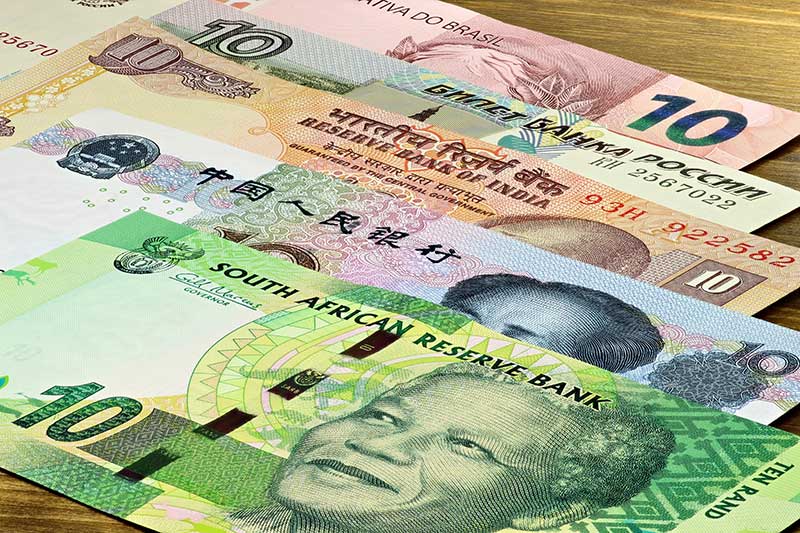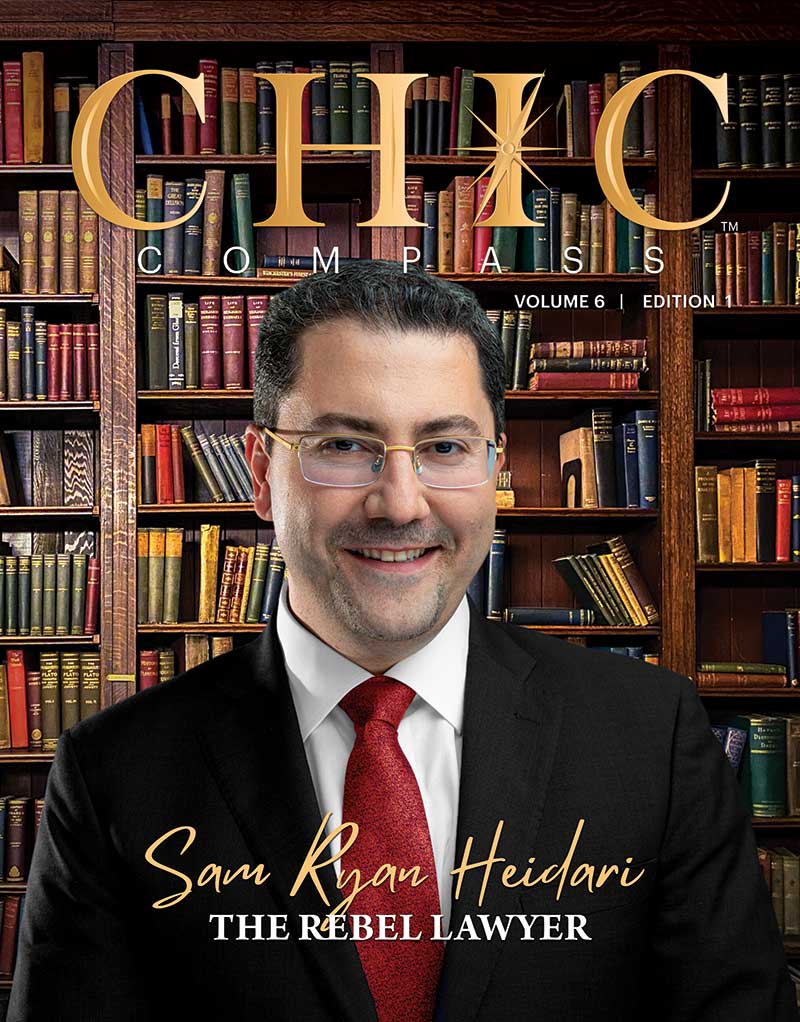
U.S. Dollar vs. BRICS – a Contender or Pretender to the Throne
BY JOSEPH AMATO
The existence of the United States Dollar (USD) as the primary reserve currency to the world financial markets has been a subject of discussion and debate among various institutions, groups, and countries for many years.
The USD was established as the primary reserve currency after World War II, with the establishment of the Bretton Woods Agreement in 1944. The Bretton Woods Conference, held in July of that year, brought together representatives from forty-four Allied nations intending to create a new international monetary system.
Under the Bretton Woods Agreement, the USD was chosen as the world’s primary reserve currency, and the participating countries worldwide decided to attach their respective currencies to the USD at fixed exchange rates. Additionally, the USD was immediately tied to gold held by the U.S. in reserve at a rate of $35 per ounce. This gold-backed system created a sense of stability and trust in the USD. The International Monetary Fund (IMF) and the International Bank for Reconstruction and Development (now part of the World Bank) were also established as part of the Bretton Woods Agreement to help stabilize the international monetary system and facilitate post-war reconstruction. The Bretton Woods system lasted until 1971, when President Nixon suspended the USD’s convertibility into gold, effectively ending the gold standard. That event would be forever known as the “Nixon Shock” and marked the beginning of the era of fiat currencies, whereby a physical commodity like gold no longer backed most worldwide currencies. Despite the end of the Bretton Woods system, the USD’s role as the primary reserve currency continued unabated due to its stability, liquidity, and worldwide trust in the U.S. economy. USD has remained the dominant reserve currency despite the efforts of many over the past decades and recently by the BRICS Initiative, which hopes to replace USD as the world’s dominant reserve currency.
Although the BRICS Initiative hopes to change worldwide financial markets substantially, the new and vastly immature movement has not yet come close to replacing the USD as the primary reserve currency.
BRICS Initiative includes the countries of Brazil, Russia, India, China, and South Africa. This group of emerging market economies started BRICS to establish a very informal alliance aimed at increasing their influence on the financial markets on the global stage. One of the major initiatives discussed within BRICS is establishing a new international reserve currency that would serve as an alternative to the USD. Replacing the USD as the primary reserve currency would be a noble goal in the minds of the BRICS countries, but it would also be an extremely complex and challenging endeavor. The USD’s status as the world’s primary reserve currency remains deeply entrenched in the global financial system, and it is supported by factors such as the size and stability of the U.S. economy, the depth of U.S. financial markets, and the widespread use of the USD in international trade and finance. There would also be several monumental challenges to replacing the USD as the primary reserve currency for any other established currency or group of currencies, including one proposed by the BRICS countries, to replace the USD.
Initially, any new reserve currency would need to gain the trust and confidence of governments, central banks, and international institutions worldwide. That would take a considerable amount of time—even decades—for this first roadblock to be overcome. Additionally, developing the necessary infrastructure for establishing a new currency or propping up an existing alternative currency, including clearing systems, international banking institutions, and financial markets, would be a massive undertaking. Consequently, the USD’s role in the existing international financial system is closely tied to the geopolitical influence of the United States. Any challenge to the USD’s status would likely face resistance from the U.S. government and its allies. And finally, the financial and economic stability and credibility of any alternative issuing country or countries’ economies would be crucial. Investors and central banks must have confidence in any alternative currency’s long-term stability. Most importantly, while ongoing discussions have been over the past decade about reducing reliance on the USD in international transactions and reserves, no single currency or initiative has ever garnered sufficient support or financial strength to replace the USD entirely.
While there isn’t a single country, entity, or group that universally opposes the USD’s historic worldwide dominance in the international financial markets, several categories of detractors have begun to be more expressive about their reasons of concern.
Some emerging market economies, particularly Brazil, Russia, India, China, and South Africa, have expressed interest in reducing their reliance on the USD in international trade and reserves. They have argued that the USD’s dominance gives the United States too much influence over the global financial system and can lead to vulnerabilities for other countries during periods of USD strength or economic instability in the U.S.

There are also anti-dollar advocates worldwide who argue that the USD’s role as the world’s primary reserve currency actually contributes to global economic imbalances and can be a source of instability. They contend that an alternative system could be fairer and more stable. These same people believe that socialism and communism work for the betterment of the people and nations alike.
Many countries or groups of countries that have faced ongoing geopolitical tensions with the United States seek to reduce their dependence on the USD to mitigate the influence of the U.S. government on their own economies. Russia, China, and Iran have often explored alternative payment systems and currencies in response to U.S. sanctions, and they have mostly been unsuccessful.
Some governments and institutions outside of the United States argue simply for diversification of their currency holdings to reduce unforeseen or imagined risk. Although the system has worked successfully for nearly eighty years, they believe they may be relying too heavily on one currency, and even with the historic strength of the USD, they can be exposed to potential currency devaluation or other unknown financial risk.
With its own agenda, the International Monetary Fund (IMF) has often called for a more balanced international monetary system that would include establishing a new global reserve currency. These organizations aim to ensure stability and fairness in the global financial system, which sounds very familiar to the intentions of the anti-dollar advocates.
Finally, cryptocurrency promoters and advocates, including Bitcoin and the wide assortment of unregulated alternative digital currencies, argue that digital currency could eventually be a non-monetary replacement for traditional fiat currencies, like the USD. They intend to use cryptocurrency to replace the USD in the international trade environment. This group views cryptocurrency, as initially intended, as a way to bypass the traditional financial systems and reduce reliance on any single currency.
While a cadre of countries, groups, and institutions insist on replacing the USD’s role as the primary reserve currency with an alternative or creating a new international monetary system, it will probably not occur in our lifetime. The USD’s dominance in the international financial markets is deeply entrenched, and any change would require the cooperation of many countries and institutions and the development of a viable and stable alternative, none of which can be accomplished without a massive movement or an unimaginable global economic disaster.


